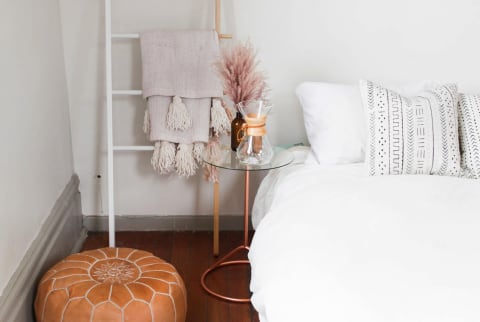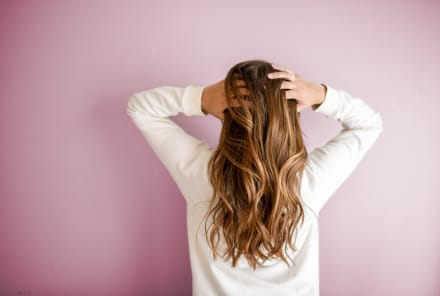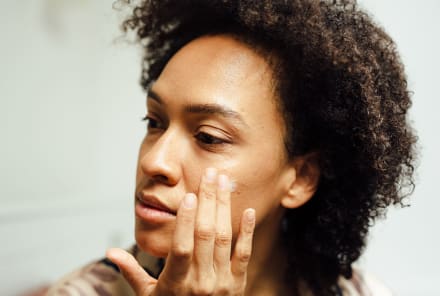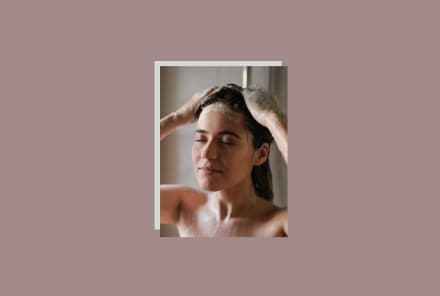Advertisement

You've heard the statistic: We spend approximately one-third of our lives1 in bed. And while we're there, we're breathing deeply with our faces shoved against our pillows, sheets, and mattresses.
All that moisture, heat, and darkness in our sleep space create the perfect environment for mold to grow. I know, scary! But as a functional medicine physician and mold expert, I've found that there are a few swaps and care tips that can increase your odds of a clean, rejuvenating night's sleep that supports instead of sabotages your health. Here are my top tips for choosing the right materials for your bedroom and maintaining them so they don't attract mold.
First, look to your mattress and mattress pad.
To start, when you shop for your next mattress, look for one made with organic materials and without flame retardants. (Here are a few nontoxic mattresses that fit the bill for any budget.) I see flame retardants such as triphenyl phosphate show up in toxicity testing with my patients: These chemicals may accumulate in the body over time and have been associated with human health concerns.
Then, cover the first layer of your mattress with a full-zip encasement mattress cover (this one is my favorite) to keep mold toxins from attaching to airborne particles and building up in your mattress over time. Look for a hypoallergenic mattress cover that zips completely around the mattress to encase it, and make sure it only contains natural (ideally organic) materials. No plastic linings if you can help it!
Next up, your mattress pad: You increase the detoxification process at night, and toxins coming through your skin are also going into the mattress. Organic cotton mattress pads placed on top of the zipped cover encasement absorbs these toxins coming out of your body and will be easier to remove and wash than the zippered cover.
Wash the pad once a week to once a month, depending on how much you sweat at night.
Next up, sheets and blankets.
Beyond providing warmth, sheets and blankets are the next layer of protection for your mattress. Toxins from your perspiration, along with shed skin cells and hair, dirt and oils, are penetrating them nightly!
I recommend washing your sheets a couple of times a week using a natural detergent without fragrances or fabric softeners.
Finally, think about the pillows.
I recommend pillows made from organic, natural materials, not foam. Early evidence2 shows that the chemicals used in these foam products are getting into the human body and may be causing harmful medical conditions.
I actually do not recommend washing pillows, as they rarely get completely dry, and that moisture can encourage mold growth. Instead, invest in an organic cotton zippered cover and wash that as often as your sheets. Pillows themselves then should be replaced every 12 to 18 months.
Bonus: Keep your bedroom's air quality in check.
Moisture may be great for our skin, but in our home environment it's not our friend. We already give off a great deal of moisture just by breathing and perspiring at night, and in humid climates this moisture can settle in between your mattress and box spring, resulting in surprising mold growth. Keep the humidity in your bedroom to less than 55 percent, ideally less than 50 percent. Depending upon your situation, you may need to invest in a large 50- to 70-pint dehumidifier to get down to this target zone.
This air you are breathing in so deeply and regularly at night should also be clean and pure, so I recommend keeping a HEPA air filter in your bedroom.
If you want to measure the results of your air-quality improvements, I love the Foobot monitor. Once you plug this small device in at home, the accompanying app will show you air-quality measurements like VOCs, fine particles, carbon dioxide, and humidity in real time.
You're probably eager to change out all of these materials at once right about now, but if you are on a budget, prioritize your pillows, pillow covers, and mattress pad first.
Watch Next
Enjoy some of our favorite clips from classes
Enjoy some of our favorite clips from classes
What Is Meditation?
Mindfulness/Spirituality | Light Watkins
Box Breathing
Mindfulness/Spirituality | Gwen Dittmar
What Breathwork Can Address
Mindfulness/Spirituality | Gwen Dittmar
The 8 Limbs of Yoga - What is Asana?
Yoga | Caley Alyssa
Two Standing Postures to Open Up Tight Hips
Yoga | Caley Alyssa
How Plants Can Optimize Athletic Performance
Nutrition | Rich Roll
What to Eat Before a Workout
Nutrition | Rich Roll
How Ayurveda Helps Us Navigate Modern Life
Nutrition | Sahara Rose
Messages About Love & Relationships
Love & Relationships | Esther Perel
Love Languages
Love & Relationships | Esther Perel


















